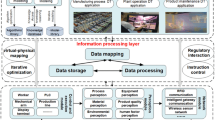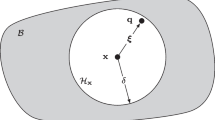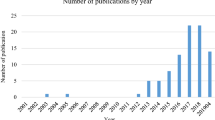Abstract
This paper presents a new parallel processing scheme called DYNAMIC-JOIN for OPS5-like production systems along with associated parallel algorithms, a parallel architecture and simulation results from a number of production systems. The main motivation behind DYNAMIC-JOIN is to reduce the variations in the processing time requirements and improve limited production level parallelism. For this, the model employs some redundancy that allows the processing of a production to be divided into units of small granularity each of which can be processed in parallel. As a consequence in addition to production level parallelism where a set of relevant productions are processed in parallel, a second level of parallelism can be exploited.
After a detailed description of the model proposed, the paper presents algorithms for processing productions with DYNAMIC-JOIN, along with a discussion of various issues and possible disadvantages. Subsequently, the paper presents a parallel processor architecture that can implement DYNAMIC-JOIN, along with simulation results from real production systems.
Similar content being viewed by others
References
Forgy, C. L., “On the Efficient Implementation of Production Systems,”Ph. D. thesis, Department of Computer Science, Carnegie Mellon University, February 1979.
Forgy, C. L.,OPS5 User’s Manual, Department of Computer Science, Carnegie Mellon University, 1981.
Forgy, C. L., “Rete: A Fast Algorithm for the Many Pattern/Many Object Match Problem,”Artificial Intelligence, 19, 1, September 1982.
Gupta, A., “Parallelism in Production Systems,”Ph. D. thesis, Department of Computer Science, Carnegie Mellon University, 1985.
Gupta, A., Forgy, C. L., Kalp, D., Newell, A. and Tambe, M., “Results of Parallel Implementation of OPS5 on the Encore Multiprocessor, inProceedings of International Conference on Parallel Processing, IEEE Computer Society, pp. 1271-280, 1988.
Gupta, A., Forgy, C. L. and Newell, A., “High-Speed Implementations of Rule-Based Systems,”ACM Transactions on Computer Systems,7,2, May 1989.
Hillyer, B. K. and Shaw, D. E., Execution of OPS5 Production Systems on a Massively Parallel Machine,”Technical Report, Department of Computer Science, Columbia University, September 1984.
Miranker, D. P., “Performance Estimates for the DADO Machine: A Comparison of TREAT and RETE,” inProceedings of International Conference on Fifth Generation Computer Systems, 1984.
Miranker, D. P.,TREAT:A New and Efficient Match Algorithm for AI Production Systems, Pittman/Morgan-Kaufman, Los Altos, CA, 1989.
Miranker, D. P. and Lofaso, B. J., “The Organization and Performance of a TREAT-Based Production System Compiler,”IEEE Transactions on Knowledge and Data Engineering, 3, 1, pp. 3–10, March 1991.
Oflazer, K., “Partitioning in Parallel Processing of Production Systems,”Ph. D. thesis Department of Computer Science, Carnegie Mellon University Pittsburgh, PA, 1987.
Perlin, M. W., “The Match Box Algorithm for Parallel Production System Match,”Technical Report, CMU-CS-89-163, School of Computer Science, Carnegie Mellon University, 1989.
Schreiner, F. and Zimmerman, G., “PESA I—A Parallel Architecture for Production Systems,” inProceedings of the 1987 International Conference on Parallel Processing (S. K. Shani, ed.), pp. 166–169, August 1987.
Stolfo, S. J., “Initial Performance of the DADO2 Prototype,”IEEE Computer, 20, 1, pp. 75–84, January 1987.
Stolfo, S. J. and Miranker, D. P., “DADO: A Parallel Processor for Expert Systems,” inProceedings of the International Conference on Parallel Processing, IEEE, pp. 74–82, 1984.
Stolfo, S. J. and Miranker, D. P., “The DADO Production System Machine,”Journal of Parallel Distributed Computation, 3, pp. 269–296, June 1986.
Ullman, J.,Principles of Database Systems, Computer Science Press, 1987.
Author information
Authors and Affiliations
Additional information
This work was done as a part of the author’s doctoral thesis at Carnegie Mellon University, Pittsburgh, PA 15213, U.S.A. It was supported in part by the Defense Advanced Research Projects Agency (DoD), ARPA Order No. 3597, monitored by the Air Force Avionics Laboratory under Contract F33615-81-K-1539. The views and conclusions contained in this document are those of the author and should not be interpreted as representing the official policies, either expressed or implied, of the Defense Advanced Research Projects Agency, or the United States Government.
About this article
Cite this article
Oflazer, K. Highly parallel execution of production systems: A model, algorithms and architecture. New Gener Comput 10, 287–313 (1992). https://doi.org/10.1007/BF03037940
Received:
Revised:
Issue Date:
DOI: https://doi.org/10.1007/BF03037940




